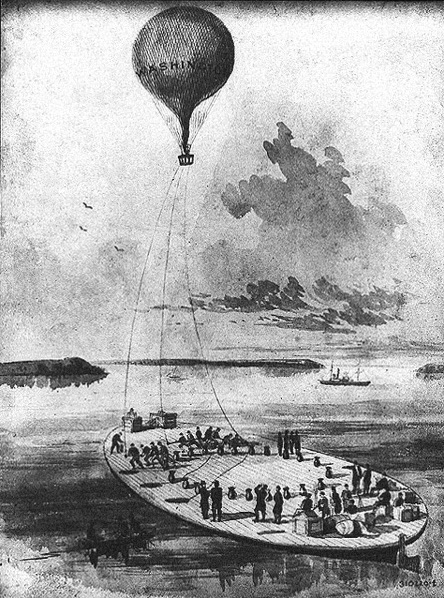The USS George Washington Parke Custis, launched in 1853, was originally a lighter used for transporting goods along the East Coast.

However, during the Civil War, it was repurposed as a balloon carrier, serving as a pioneering platform for aerial reconnaissance for the Union.
This innovative use marked one of the earliest attempts at airborne surveillance in military history.
Origins Of The Custis
The USS George Washington Parke Custis was launched in 1853 as a lighter, which is a type of flat-bottomed barge.
Named after George Washington Parke Custis, the step-grandson of George Washington and the father-in-law of Robert E. Lee, the vessel was not originally intended for military service.
Its primary function was to transport goods along the rivers and harbors of the East Coast.
Transformation and Role in the Civil War
As tensions escalated in the 1860s and the Civil War began, there was a growing need for military innovation.
The Union, aiming to cut off Confederate supply lines and maintain control over key waterways, sought ways to exploit naval advantages.
The USS George Washington Parke Custis underwent a transformation that would allow it to play an instrumental role in this strategy.
 USS George Washington Parke Custis with a balloon tethered.
USS George Washington Parke Custis with a balloon tethered.
The vessel was retrofitted to serve as a balloon carrier, a concept that was virtually unheard of at the time.
The idea was to use the vessel as a mobile platform from which observation balloons could be launched.
These balloons, tethered by lines, would allow Union observers to survey Confederate positions and movements from an elevated perspective.
This was one of the earliest attempts at airborne reconnaissance, an idea that would revolutionize warfare in the 20th century.
Legacy Of The Custis
The integration of the USS George Washington Parke Custis into the Union’s naval arsenal marked a significant shift in naval warfare.
It underscored the importance of surveillance and intelligence-gathering in the modern battlespace.
While the balloons’ actual effectiveness in influencing battles can be debated, the idea they represented was undeniably groundbreaking.





